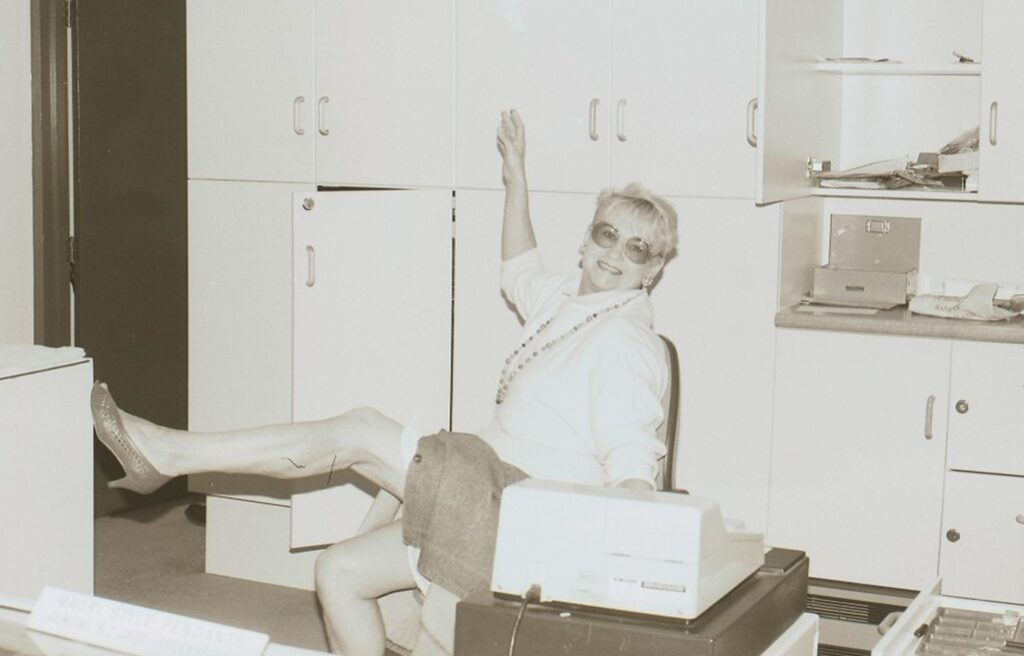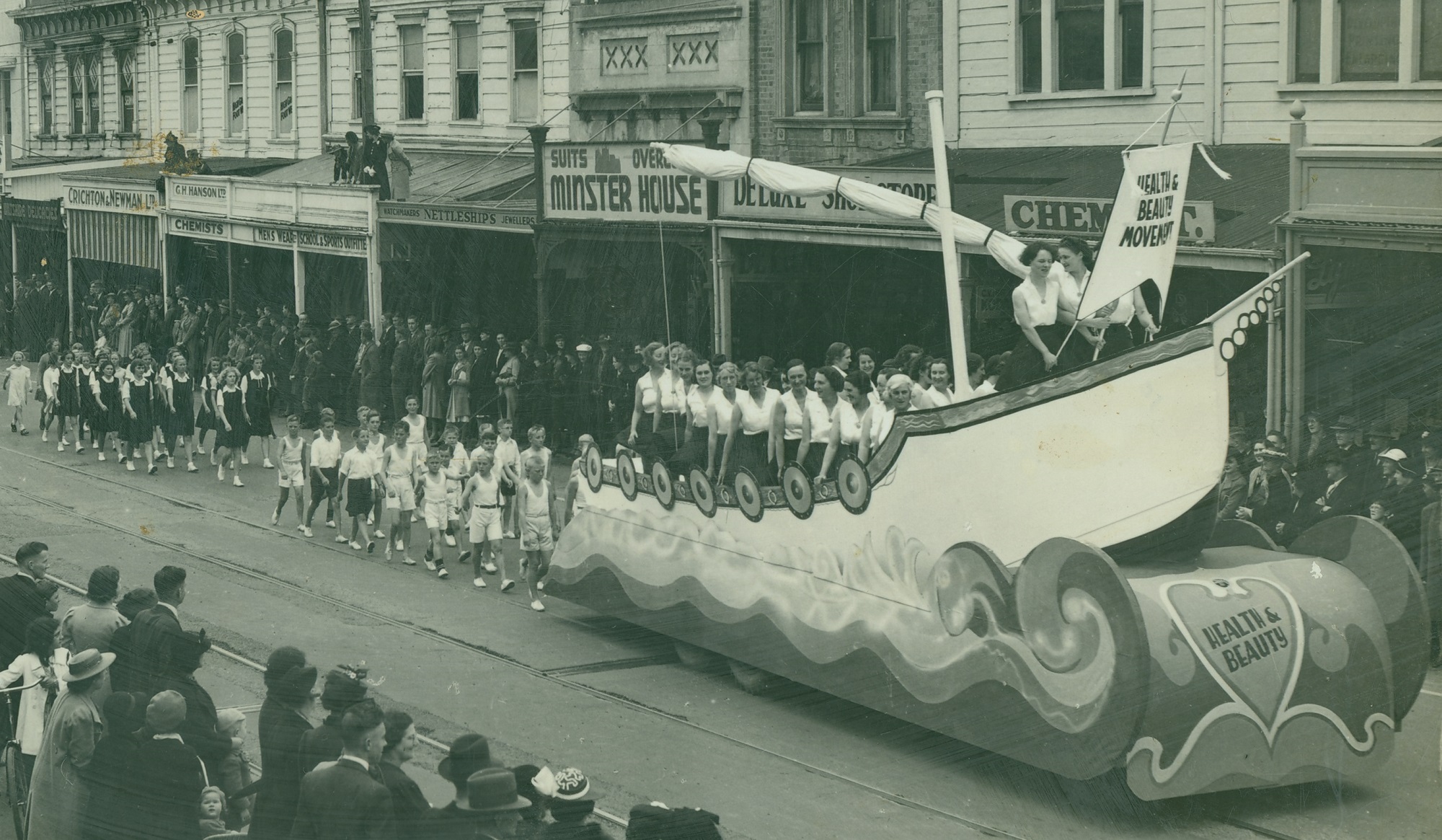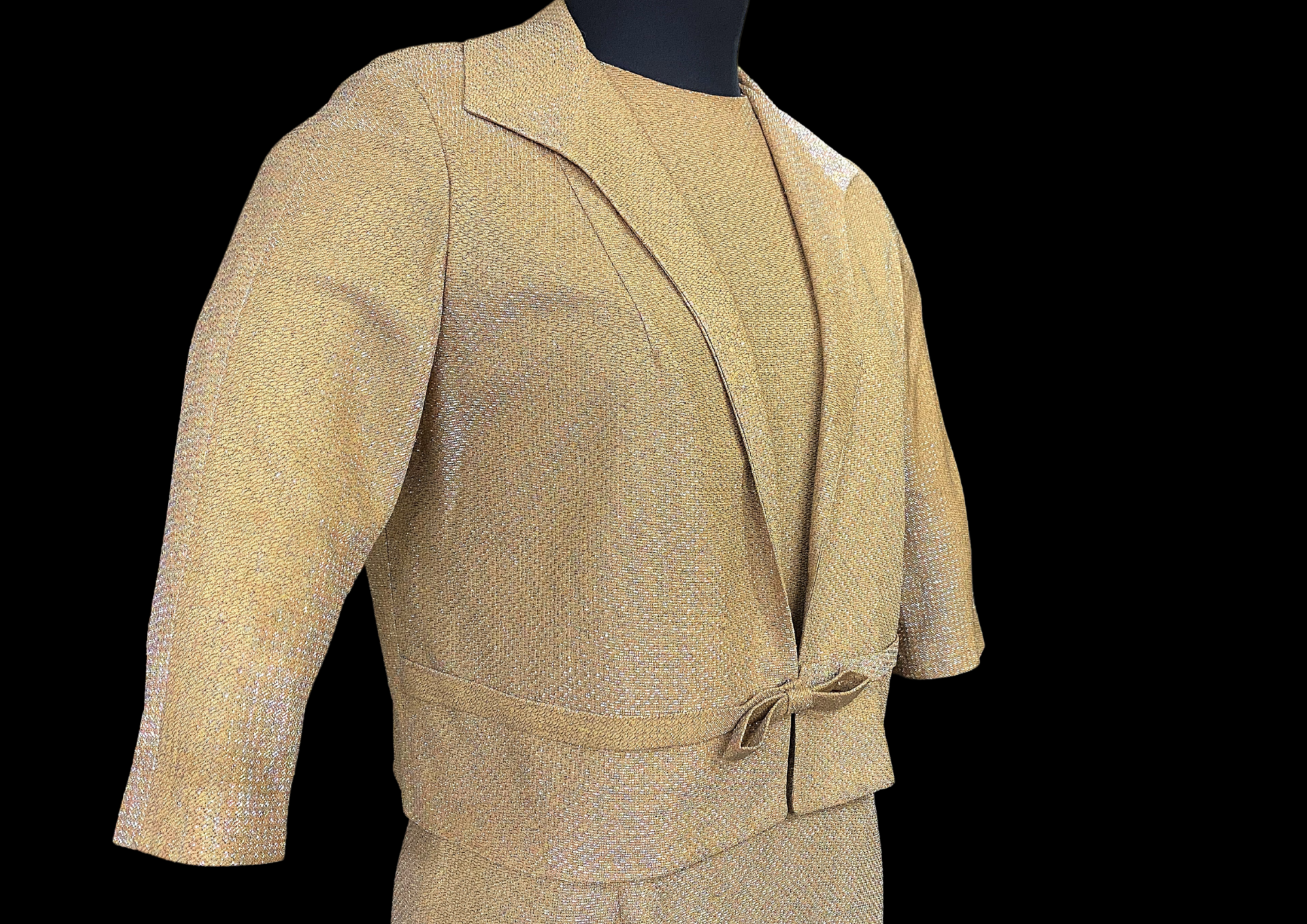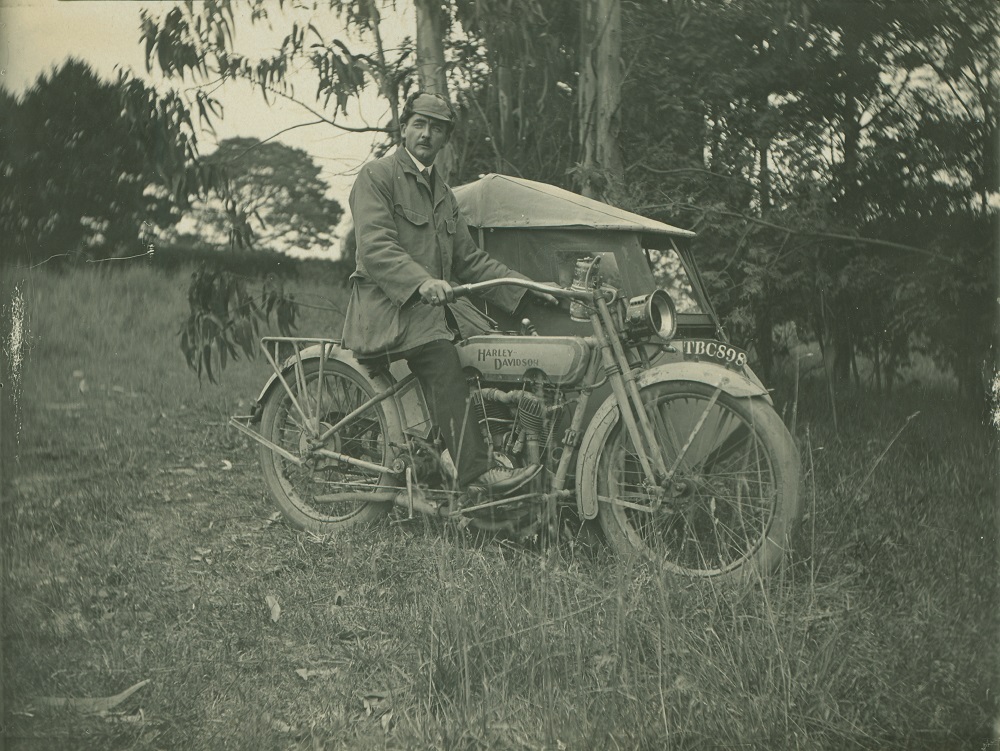Collection Stories
This unique maxi dress is made of a boldly printed chiffon with rayon taffeta lining. The fabric was purchased in Whanganui and sewn by Muriel ‘Midge’ Channon, a long-time museum staff member from 1972 to 1992.
The dress style, called the maxi due to its long length, became popular in 1968 when fashion designer Oscar de la Renta débuted a design at the Elizabeth Arden Fashion Show in New York. The style was an instant hit for many women, suiting different ethnic, hippie and bohemian styles of the late 1960s. The maxi remained popular throughout the 1970s and had a resurgence in the 2000s.
While there are many variations of the maxi dress, traditionally they are form-fitting on top and cut loosely over the rest of the body, making it a garment that can be worn by many different body shapes and for many different occasions. Midge wore this dress to a wedding.
Until the 1980s, home-sewing was popular for many women. Sewing allowed them to express and adapt fashion through their choices of design patterns, fabrics, colours and trims and let them interpret, adapt and create their own sense of style.
The late 1950s was the peak for home sewing. Girls learnt the skill from their mothers and it was also taught in schools. Teenage girls were encouraged to sew as a hobby. Sewing machine manufacturers marketed home sewing to teenage girls as a cost-effective way to have a wardrobe for a busy social calendar while helping to snag the ideal boyfriend. For adult women, sewing was an economical way to clothe their families.
In Whanganui in the late 1960s, there were at least thirteen drapery shops. They serviced the home sewer with extensive ranges of fabrics, cottons, trims and patterns. The patterns were made by companies such as Butterick, McCall’s, Simplicity and Vogue, all in the latest styles from Paris, London and New York. The adept home sewer could tweak them to demonstrate individual flair.

The 1970s saw a steep decline in home sewing. As more women entered the workforce, sewing became an uneconomic use of time. In the 1980s, commercial clothing production was produced by countries with low labour costs. Ironically, costs for homemade clothing became more expensive than readymade clothing. In Whanganui, by the end of 1989, there were only five drapery shops left. In 2023 there are only two. Sewing has become a hobby again, a creative outlet for people who are motivated by quality, originality and fit.
Midge was born Muriel Furness in 1931 in Essex, England. In 1952 Midge boarded SS Captain Cook and voyaged to New Zealand. While on board she met an Englishman who was to become her future husband, John Channon. The pair married in December 1953 and John took on farming work around Waitōtara, Kiwitea and then Whanganui.
By Trish Nugent-Lyne, Kaihāpai Taonga/Collections & Curatorial Lead at Whanganui Regional Museum.
Maxi dress, late 1960s
Made by Muriel Channon
Made of chiffon with a rayon taffeta lining
Gift from Muriel Channon, 1990
WRM 1990.39.2
Photographed by Kathy Greensides
View the full-length image.






